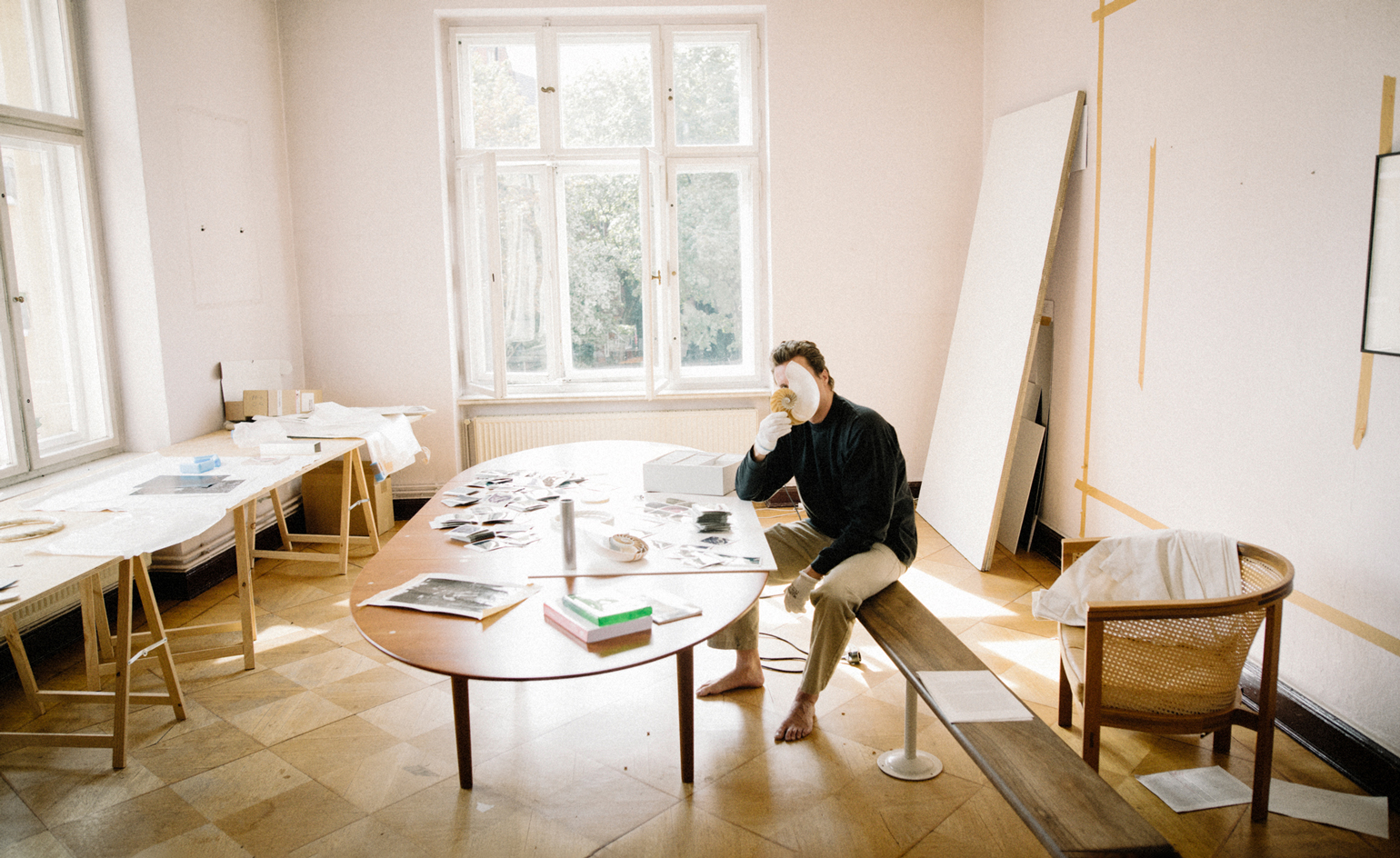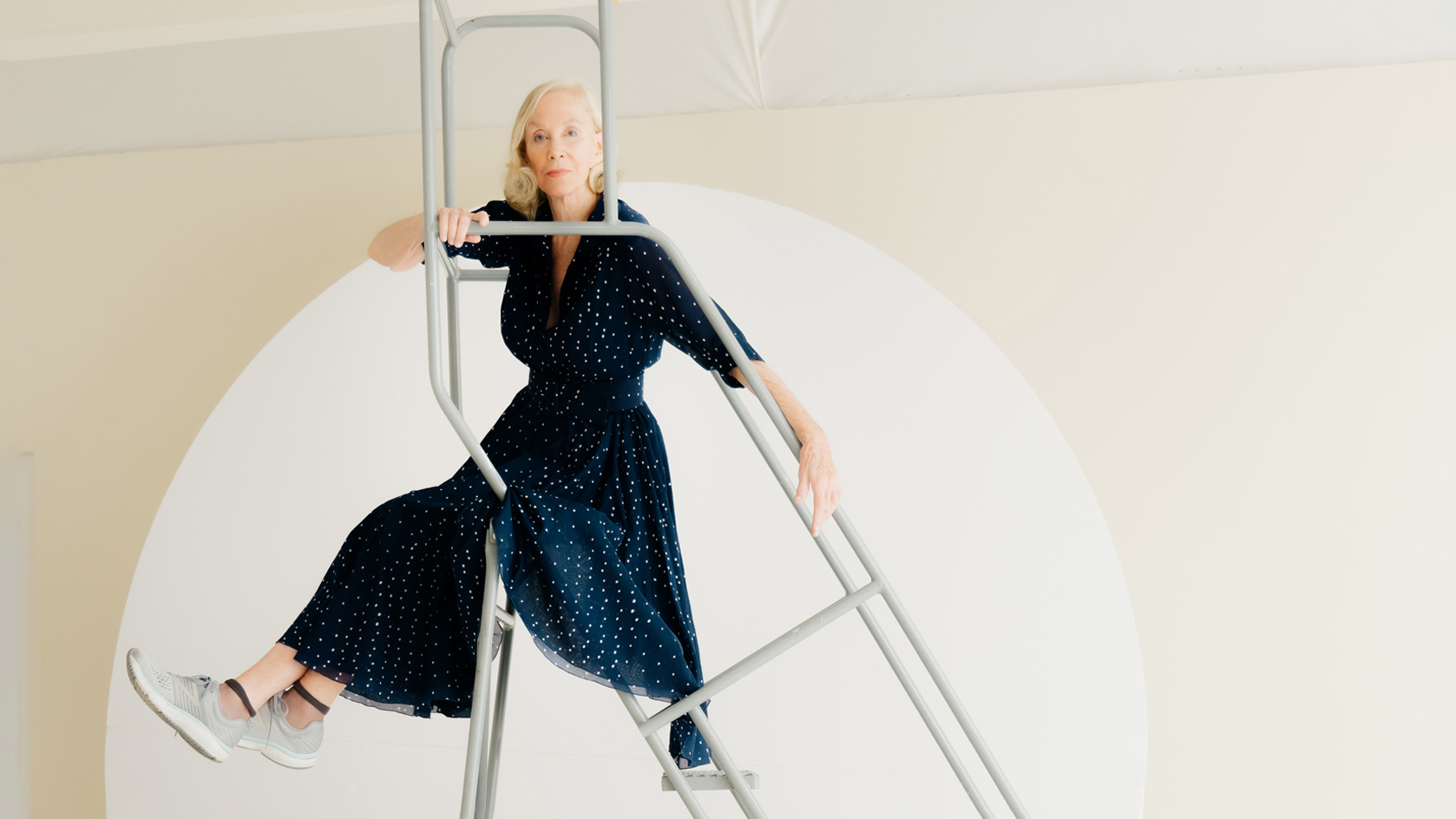Keisuke Otobe on image-making like a DJ: ‘Instead of scratching music, I scratch photographs’
In this month’s ‘through the lens’ profile, Keisuke Otobe discusses democratising photography, using a photocopier as a camera, and shooting surrealist furniture for the Wallpaper* Design Awards 2022

Keisuke Otobe - Photography
Left to right: ‘Chestnut Roaster’ from LOEWE Weaves Collection, price on request, by Laia Arqueros, for LOEWE in collaboration with Sotheby’s; ‘Storyteller’ Shelving, price on request, by Barbora Zilinskaite; ‘Manu Peluda Chair’, price on request, by Chris Wolston, from The Future Perfect; ‘Untitled #01’ Felted Merino Wool and Cedar, price on request, by Liam Lee; ‘Stool Made in 643 Minutes’, price on request, by Diego Faivre.
For artist Keisuke Otobe, photographs are just a starting point for his artful scanning processes. Having a flexible methodology allows Otobe to say, ‘Beijing is the place where I do my research and get insights; London is my biggest challenge; Tokyo is where my future is.’
This borderless perspective was brought to life for our February 2022 Design Awards issue, in which Otobe animated five surrealist furniture pieces. Here, he talks about past and future inspirations.
Wallpaper*: Describe your style and process
Keisuke Otobe: My style is making images using a photocopier, rather than a camera. I have found different ways of doing it but the most particular way is like being a DJ; instead of scratching the music, I scratch the photograph. So having the physical object doesn’t matter. I just need images.


Top: I am a sculpture #01. Above: I am a sculpture #02, by Keisuke Otabe
W*: Tell us about how you brought your way of working to our story on surreal furniture pieces
KO: Cut-outs of the pieces were shared with me, which I printed in colour on normal paper. Then I worked on the photocopier. At first, I was printing on proper professional photo paper, but then I quit because, in the end, I found that the quality was better with normal paper. This way, I don't have to pay postage and customs because of Brexit, so it suits my work much better.
W*: What is the most interesting thing happening within photography now?
KO: I'm interested in how Wolfgang Tillmans’ generation and the following generations will use photography. Because I think Tillmans combines all the techniques and methods of photography and continues to record them, changing their composition, editing and size as the Earth changes every day.
I am interested in the possibilities of democratised photography, just as painting further developed with the advent of photography. Will a photograph remain just a photograph? Will it remain a tool for recording and memory? The piece I am a sculptor, which I’ve been working on since my visit to Beijing in 2018, is one proposal:
Wallpaper* Newsletter
Receive our daily digest of inspiration, escapism and design stories from around the world direct to your inbox.
I AM A SCULPTOR MY MATERIALS ARE IMAGES BECAUSE IMAGES ARE OUR FUTURE BECAUSE WE WILL LIVE IN A NEW DIGITAL ERA


Top: I am a sculptor #03. Above: I am a sculptor #04
W*: What’s on your radar?
KO: Whether I know it well or not, I am mostly interested in art in a general sense, Eastern culture and thought, marketing and strategy, and the future. I am influenced by Yuval Noah Harari’s books and lectures, and also in AI tech and biotech. I am interested in the future of humanity and how we are changing.
I’m also interested in the use of language, so I’m always mumbling to myself.
As a photographer, another artist who has influenced me is Man Ray. I like his experimental artwork, which is not just about photography. I also like Hiroshi Sugimoto's transformation from photographer to contemporary artist. I also love Anish Kapoor’s phenomenological and poetic space, Rothko’s reds and, more recently, Monet’s paintings when he had cataracts and Cézanne's apples; that ability to reverse a consequent weakness.
I'm not interested in what the artists did, but how and why they did it. I believe that if science is a way of knowing the world, then art is also a way of knowing the world. I believe in the power of art. For example, Kurashiki in Japan was saved from the American bombing in the Second World War because a young local businessman bought a lot of Western art, including work by Monet, Matisse, Picasso and El Greco [housed in the Ohara Museum of Art].
W*: What’s next for you this year?
KO: It would be great to be able to move more freely, learn more and more about Japanese culture and sensibility. And to keep making more and more works.
If one day I can exhibit them in a nice space, I will be happy. Until then, I’ll keep my roots deep.
As for my personal life, I actually got my driving licence before Covid. So after the pandemic, I would like to travel around Europe by car with my mother, who studied Western art.

I am a sculptor #05
INFORMATION
As Photography Editor at Wallpaper*, Sophie Gladstone commissions across fashion, interiors, architecture, travel, art, entertaining, beauty & grooming, watches & jewellery, transport and technology. Gladstone also writes about and researches contemporary photography. Alongside her creative commissioning process, she continues her art practice as a photographer, for which she was recently nominated for the Foam Paul Huf Award. And in recognition of her work to date, listed by the British Journal of Photography as ‘One to Watch’.
-
 All-In is the Paris-based label making full-force fashion for main character dressing
All-In is the Paris-based label making full-force fashion for main character dressingPart of our monthly Uprising series, Wallpaper* meets Benjamin Barron and Bror August Vestbø of All-In, the LVMH Prize-nominated label which bases its collections on a riotous cast of characters – real and imagined
By Orla Brennan
-
 Maserati joins forces with Giorgetti for a turbo-charged relationship
Maserati joins forces with Giorgetti for a turbo-charged relationshipAnnouncing their marriage during Milan Design Week, the brands unveiled a collection, a car and a long term commitment
By Hugo Macdonald
-
 Through an innovative new training program, Poltrona Frau aims to safeguard Italian craft
Through an innovative new training program, Poltrona Frau aims to safeguard Italian craftThe heritage furniture manufacturer is training a new generation of leather artisans
By Cristina Kiran Piotti
-
 Felicia Honkasalo on creative obsessions, gothic horror, and the sci-fi world of AI photography
Felicia Honkasalo on creative obsessions, gothic horror, and the sci-fi world of AI photographyExplore the vision of Helsinki-based artist Felicia Honkasalo in ‘Through the lens’, our monthly series spotlighting photographers who are Wallpaper* contributors
By Sophie Gladstone
-
 Cyprien Gaillard on chaos, reorder and excavating a Paris in flux
Cyprien Gaillard on chaos, reorder and excavating a Paris in fluxWe interviewed French artist Cyprien Gaillard ahead of his major two-part show, ‘Humpty \ Dumpty’ at Palais de Tokyo and Lafayette Anticipations (until 8 January 2023). Through abandoned clocks, love locks and asbestos, he dissects the human obsession with structural restoration
By Harriet Lloyd-Smith
-
 Year in review: top 10 art interviews of 2022, chosen by Wallpaper* arts editor Harriet Lloyd-Smith
Year in review: top 10 art interviews of 2022, chosen by Wallpaper* arts editor Harriet Lloyd-SmithTop 10 art interviews of 2022, as selected by Wallpaper* arts editor Harriet Lloyd-Smith, summing up another dramatic year in the art world
By Harriet Lloyd-Smith
-
 Yayoi Kusama on love, hope and the power of art
Yayoi Kusama on love, hope and the power of artThere’s still time to see Yayoi Kusama’s major retrospective at M+, Hong Kong (until 14 May). In our interview, the legendary Japanese artist vows to continue to ‘create art to leave the message of “love forever”’
By Megan C Hills
-
 Antony Gormley interview: ‘We’re at more than a tipping point. We’re in a moment of utter crisis’
Antony Gormley interview: ‘We’re at more than a tipping point. We’re in a moment of utter crisis’We visit the London studio of British sculptor Antony Gormley ahead of his major new show ‘Body Field’ at Xavier Hufkens Brussels
By Harriet Lloyd-Smith
-
 Photographer Maisie Cousins on nostalgia, impulsive making and ‘collecting useless things’
Photographer Maisie Cousins on nostalgia, impulsive making and ‘collecting useless things’Explore the vision of British artist Maisie Cousins in ‘Through the lens’, our monthly series spotlighting photographers who are Wallpaper* contributors
By Sophie Gladstone
-
 Rashid Johnson in Menorca: a journey through migration, longing and togetherness
Rashid Johnson in Menorca: a journey through migration, longing and togethernessWe visited Rashid Johnson’s Brooklyn studio ahead of the artist’s show at Hauser & Wirth Menorca, which contemplates drift – physical and emotional
By Osman Can Yerebakan
-
 Step inside the kaleidoscopic universe of Pipilotti Rist
Step inside the kaleidoscopic universe of Pipilotti RistSwiss artist Pipilotti Rist, who headlines Wallpaper’s November 2022 issue, has transformed the way we see, with a poetic yet playful practice spanning three decades. Here, and in a special portfolio, she reveals how she has liberated video art from its conventions, imbued the digital realm with emotion, animated public spaces, and harnessed the healing powers of colour
By Jessica Klingelfuss